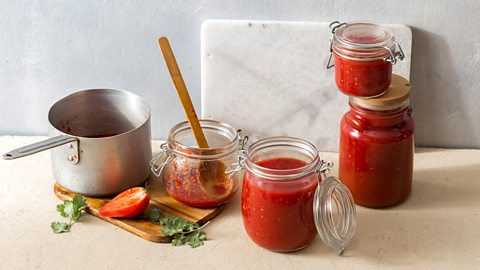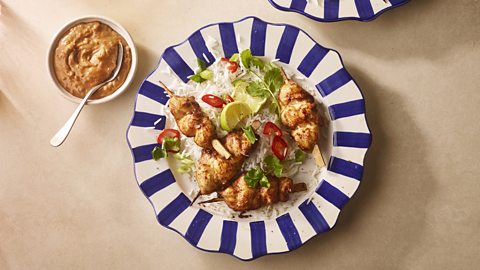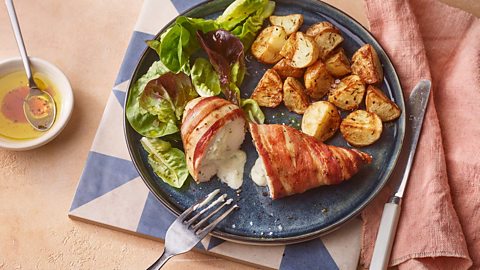How to make the most of the kitchen gadgets you got for Christmas – according to a professional
If you were on the receiving end of a rice cooker, toastie press or bread maker this Christmas and are wondering what to do with it, we have answers.
By Kerstin Rodgers
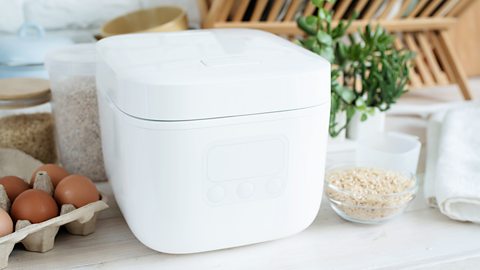
In January, many of us are left with a new kitchen gadget of some form, but often lack ideas as to how to put it to use. While there’s plenty of advice on using air fryers, slow cookers and pressure cookers out there, an online search of recipes for rice cookers, grilled sandwich makers and bread machines won’t offer up quite so much inspiration.
That might partly be because they’re often seen as one-trick ponies. Leanne Murphy, baking buyer for cookware shop Lakeland.co.uk, says, “We tend to see appliances with one function get forgotten about quickly. Now, people want appliances with multiple functions to try and get the most out of them and make them worktop worthy.”
After all, if a piece of kit is going to take up precious real estate on your kitchen counter, it’s going to need to earn its keep.
But these seemingly single-function gadgets have more to offer than you might think. Plus, they’ll likely be cheaper to run than your main kitchen appliances.
Here’s how to maximise the functionality of three oft-neglected gadgets and save them from the post-Christmas charity shop pile.
Rice Cookers
My rice cooker takes pride of place in my kitchen. Since first going on sale in the 1950s, they’ve become really popular across Asia especially, with many households in China, Japan and Korea owning one.
Here in the UK, where Asian food’s popularity is on the up and gluten-free diets are becoming more common, could the rice cooker be on the brink of a comeback?
Although a professional chef, I’ve never been great at cooking rice (we all have our weak points). An electric rice steamer guarantees that you have perfectly fluffy grains, every time. Even the really basic models work like a dream – I had one that cost £8 and lasted two decades. It’s the one piece of kitchen kit my daughter insisted on taking to university.
I’ve cooked sushi rice, jasmine rice, brown rice, short grain and long grain rice in mine, all with spot-on results. I use the classic ratio of one part rice to one and a half parts water, although I’m anything but fastidious about measuring. I stick my finger in the rice cooker bowl, see where the rice comes up to on my knuckle and estimate how much water I should add. I throw in a teaspoon of salt and 10 minutes later, hey presto: restaurant-quality rice.
The rice cooker is also ideal for cooking couscous, bulgur wheat, quinoa and freekeh.
Moroccan vegetables with couscous
You can use your rice cooker to prepare all kinds of different grains, like couscous
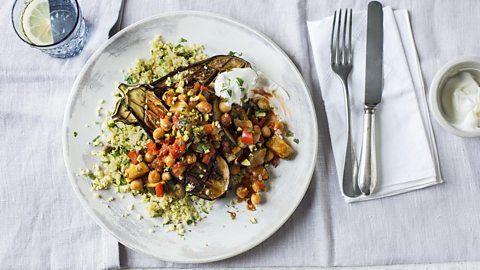
Other creative uses include adding some vegetables such as bok choi or Chinese cabbage on top of the rice to cook at the same time.
If mornings aren’t your time to shine, listen up: porridge cooks so well in the rice steamer, becoming creamy and not too stiff. I put it on at night with a delayed timer so that it’s ready for the morning.
Grilled sandwich makers
Although grilled sandwiches have existed for more than a century in the form of the French croque-monsieur and the Italian panini, it was Australians who invented the electric toastie maker (called a ‘jaffle’ in Aussie slang).
Toasties are a 1970s trend that have stuck around, and these machines sell particularly well in the colder seasons (probably thanks to the images of comfortingly gooey cheese oozing out from between golden slices of toasted bread that they conjure).
Toasties are a great way of using up older bread, reducing food waste. And they don’t have to be savoury, either: you could try a pudding version using chocolate spread, banana or caramelised apple. Of course, as any toastie aficionado will tell you, butter the outsides of the bread for an extra indulgent result.
Tuna melt
Swap your frying pan for your new toastie maker when making an indulgent tuna melt
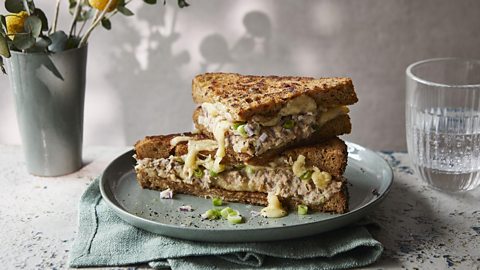
Far from one-trick ponies, toastie makers are more versatile than you might think. I’ve experimented with a few different foods in mine – all of which worked well (although, yes, did end up triangle-shaped).
A cheese omelette made in the toastie maker is one of my biggest wins. Whisk one egg per triangle and add your flavourings such as cheese, mushrooms, chilli peppers, chopped onions, chives or spinach before pouring in and closing the lid.
I’ve also made a simplified mini aubergine parmigiana. Brush thin slices of aubergine with olive oil, add a slice or two of cheese, some tomato paste and garlic if you wish, then top with more aubergine slices before cooking.
Another idea is to use filo pastry to make samosas with a curried filling. Using the same principle as above, brush the pastry, cut and fold to the size of the sandwich maker, add your filling and then finish with more filo.
Most of us don’t keep a raclette machine kicking around at home (very much an Alpine speciality), but this is another dish a toastie maker is perfect for. Keeping the machine open, add slices of cheese and, once melted, slide onto a plate to enjoy with boiled baby potatoes, mini pickled gherkins and cured meats.
Bread makers
Baking in a bread maker is easy; it will proof, knead and cook your loaf with zero mess and even less effort. This gadget became popular during lockdown when everyone was making their own bread. Sales have since steadied but, according to Murphy, are still “up by 39%” compared to before the pandemic.
You aren’t restricted to one type of loaf, either: I’ve made wholemeal bread, brioche and pizza dough in a basic model. You can also make cakes like tea loaves in your trusty bread maker.
Some bread makers also come with a yoghurt setting which I’ve experimented with. The result is more like a drinking yoghurt than a thick Greek-style version, but it is deliciously tangy. All you need is a small pot (150ml) of live natural yoghurt as a ‘starter’ and 1.5 litres of whole milk. The process does take 10 hours but it’s pretty hands-off and I’d say the result is worth it. You can then add fresh, stewed or dried fruit or other flavourings towards the end.
Some bread makers come with jam functions and take the hassle (and mess) out of the jam-making process
Likewise, you’ll frequently find a jam setting on bread machines. I had a go at making jam in mine and it took less than an hour and a half. It was so much easier than standing over a spluttering pot and stirring until it reaches the setting point. To get the best result, just make sure you use preserving sugar.
Originally published January 2023
